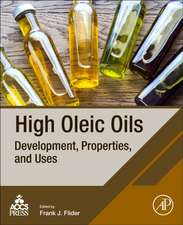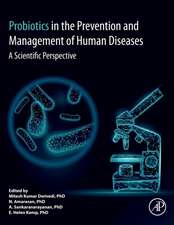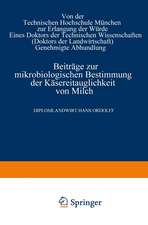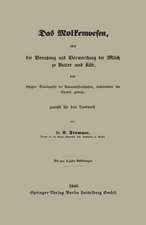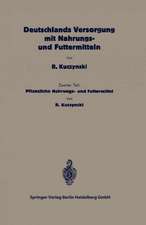Microencapsulation and Microspheres for Food Applications
Editat de Leonard M.C. Sagisen Limba Engleză Hardback – 12 aug 2015
Each chapter provides an in-depth account of controlled release technologies, evidence based abstracts, descriptions of chemical and physical principals, and key relevant facts relating to food applications. Written in an accessible manner, the book is a must have resource for scientists, researchers, and engineers.
- Discusses the most current encapsulation technology applied in the food industry, including radiography, computed tomography, magnetic resonance imaging, and dynamic NMR microscopy
- Presents the use of microsphere immunoassay for mycotoxins detection
- Covers a broad range of applications of microcapsules and microspheres, including food shelf-life, pesticides for crop protection, and nanoencapsulated bacteriophage for food safety
Preț: 919.36 lei
Preț vechi: 1056.77 lei
-13% Nou
Puncte Express: 1379
Preț estimativ în valută:
175.92€ • 184.14$ • 146.42£
175.92€ • 184.14$ • 146.42£
Carte tipărită la comandă
Livrare economică 24 martie-07 aprilie
Preluare comenzi: 021 569.72.76
Specificații
ISBN-13: 9780128003503
ISBN-10: 0128003502
Pagini: 434
Dimensiuni: 191 x 235 x 24 mm
Greutate: 0.96 kg
Editura: ELSEVIER SCIENCE
ISBN-10: 0128003502
Pagini: 434
Dimensiuni: 191 x 235 x 24 mm
Greutate: 0.96 kg
Editura: ELSEVIER SCIENCE
Public țintă
Food Engineers and Bioengineers; Researchers and Professionals in microencapsulation industries; food biochemistry; grad studentsCuprins
Section 1: Microcapsules and microspheres produced for application in food
1. Microcapsules produced from zein
2. Microcapsules with protein fibril reinforced shells
3. Alginate nanocapsules prepared by internal or external gelation with nanoparticles
4. Cationic starch nanospheres
5. Nanoemulsion based delivery systems
6. Water-in-oil-in-water nanoencapsulation systems
7. Engineering hydrogel microspheres for healthy and tasty foods
8. Progress in applications of liposomes
Section 2: Methods to analyse structure, release properties, and stability
9. Stability and Permeability of Microcapsules for Controlled Drug Delivery from Dynamic NMR Microscopy
10. Determination of mechanical properties of microcapsules
11. Theoretical modeling of mechanical behavior and release properties of encapsulation systems
Section 3: Microencapsulation of food components
12. Microencapsulation of essential oils using spray drying technology
13. Microencapsulation of plant oils rich in alpha-linolenic acid: Effect of processing parameters
14. Food Applications of Microencapsulated Omega-3 Oils
15. Use of microencapsulated ingredients in bakery products: technological and nutritional aspects
16. Lipid Nanoparticles: delivery system for bioactive food compounds
17. Microencapsulation of sweeteners
18. Microencapsulation of grape seed extracts
19. Microencapsulation of natural antioxidant pigments
20. Encapsulation of probiotics in milk protein microcapsules
1. Microcapsules produced from zein
2. Microcapsules with protein fibril reinforced shells
3. Alginate nanocapsules prepared by internal or external gelation with nanoparticles
4. Cationic starch nanospheres
5. Nanoemulsion based delivery systems
6. Water-in-oil-in-water nanoencapsulation systems
7. Engineering hydrogel microspheres for healthy and tasty foods
8. Progress in applications of liposomes
Section 2: Methods to analyse structure, release properties, and stability
9. Stability and Permeability of Microcapsules for Controlled Drug Delivery from Dynamic NMR Microscopy
10. Determination of mechanical properties of microcapsules
11. Theoretical modeling of mechanical behavior and release properties of encapsulation systems
Section 3: Microencapsulation of food components
12. Microencapsulation of essential oils using spray drying technology
13. Microencapsulation of plant oils rich in alpha-linolenic acid: Effect of processing parameters
14. Food Applications of Microencapsulated Omega-3 Oils
15. Use of microencapsulated ingredients in bakery products: technological and nutritional aspects
16. Lipid Nanoparticles: delivery system for bioactive food compounds
17. Microencapsulation of sweeteners
18. Microencapsulation of grape seed extracts
19. Microencapsulation of natural antioxidant pigments
20. Encapsulation of probiotics in milk protein microcapsules

